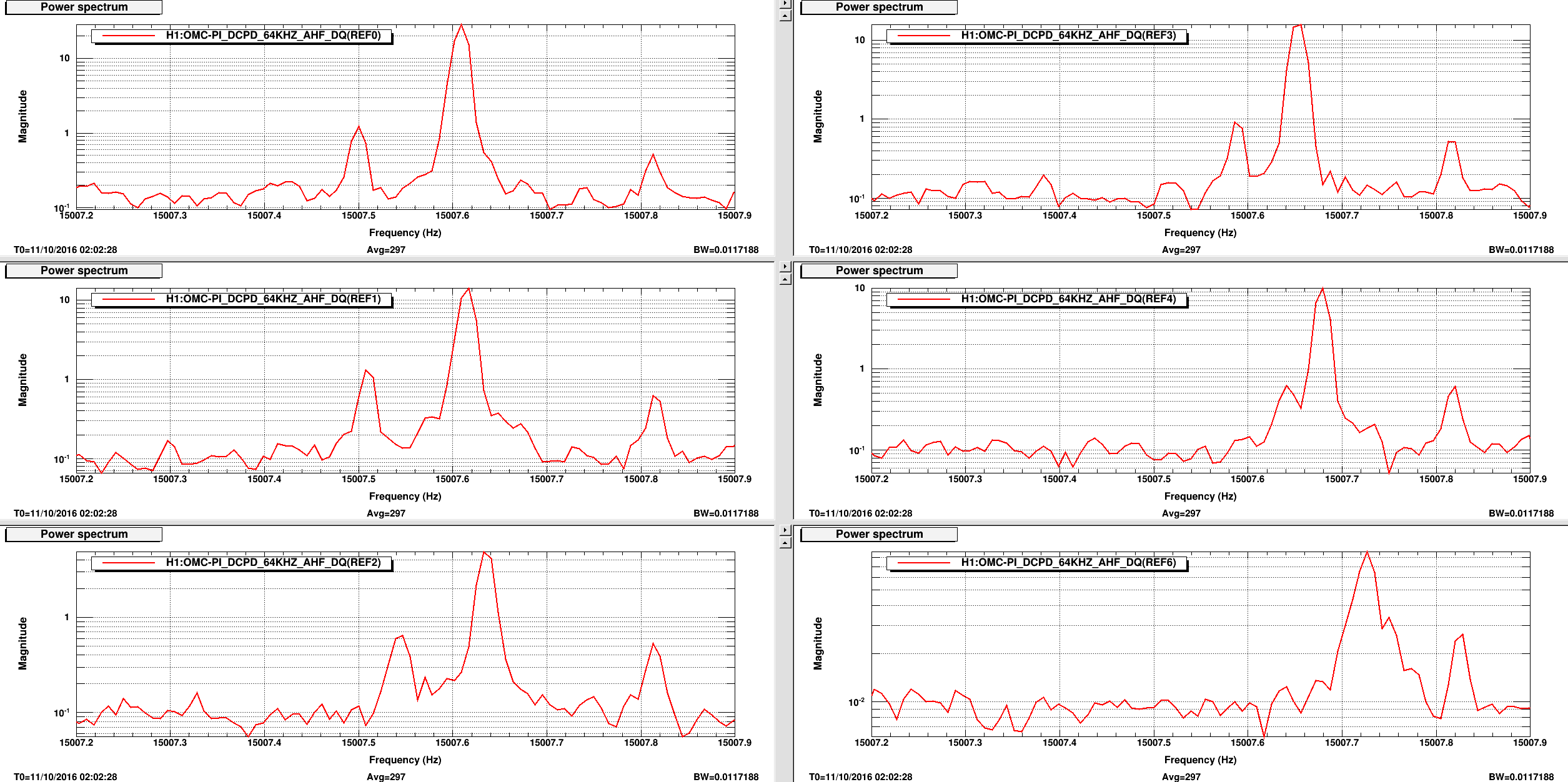First known case of crossing PI modes: over the course of a few hours, ETMX Mode18 crosses over the more stationary ETMY Mode26. Last night's and today's trouble with Mode26 were partially a result of not knowing this crossover was happening.
Both modes are differential drumhead. Crossover happens a few hours in from cold lock: ETMY Mode26 (tallest peak shown below) begins around 15007.6 Hz and slowly drifts upward with heating over about 5 hours. ETMX Mode18 begins at a lower frequency 15007.5 Hz, drifts upwards in frequency more rapidly, and crosses over Mode26 to a higher frequency until you see it poke out at a higher frequency. Drift is shown sequentially below (in order of REF#) in a bit less than 1 hour snapshots over the 5 hours.

This cold-start 5 hour lock was followed by two rapid relocks of 3 and 4 hours respectively, allowing for a general trend of what a 12 hourish lock would look like since optics had little time to cool down. Attached are snapshots over the following two locks; combine with that above to get a good stop motion of the drift. Note that warm locks most likely won't see crossover.
Note the static peak ~ 15007.8 Hz. Its lack of drift with temperature suggest not a body mode, though its similar apparent width and overlap with the later stages of Mode18 helped me miss that crossover was happening. Crossover was also probably missed due to cold locks being more rare and the gain of Mode18 seemingly low during the times it's frequency is below Mode26.
Also attached is plot of frequency shift with time (not yet fit).
Damping: I've set up sequential guardian controlled band passes for Mode26 (and witnessed successful switching via guardian tonight); these should cover locks at least 12 hours long and each BP has at most +/- 24 deg phase. Mode18 is currently bandpassed for frequencies above Mode26; we'll have to think about and play with the PLL handling crossing modes a bit. Leaving this for now with the hopes that we relock over night in some reasonable time period and don't have a stone cold lock.



























Can we roughly quantify this in m/rtHz/rad?
Moving SRM by ~20 urad reduces the noise by a factor ~2
A bit more like a factor 3 of noise reduction when moving IMC_DOF_1_P with an offset of 400, don't know the calibration